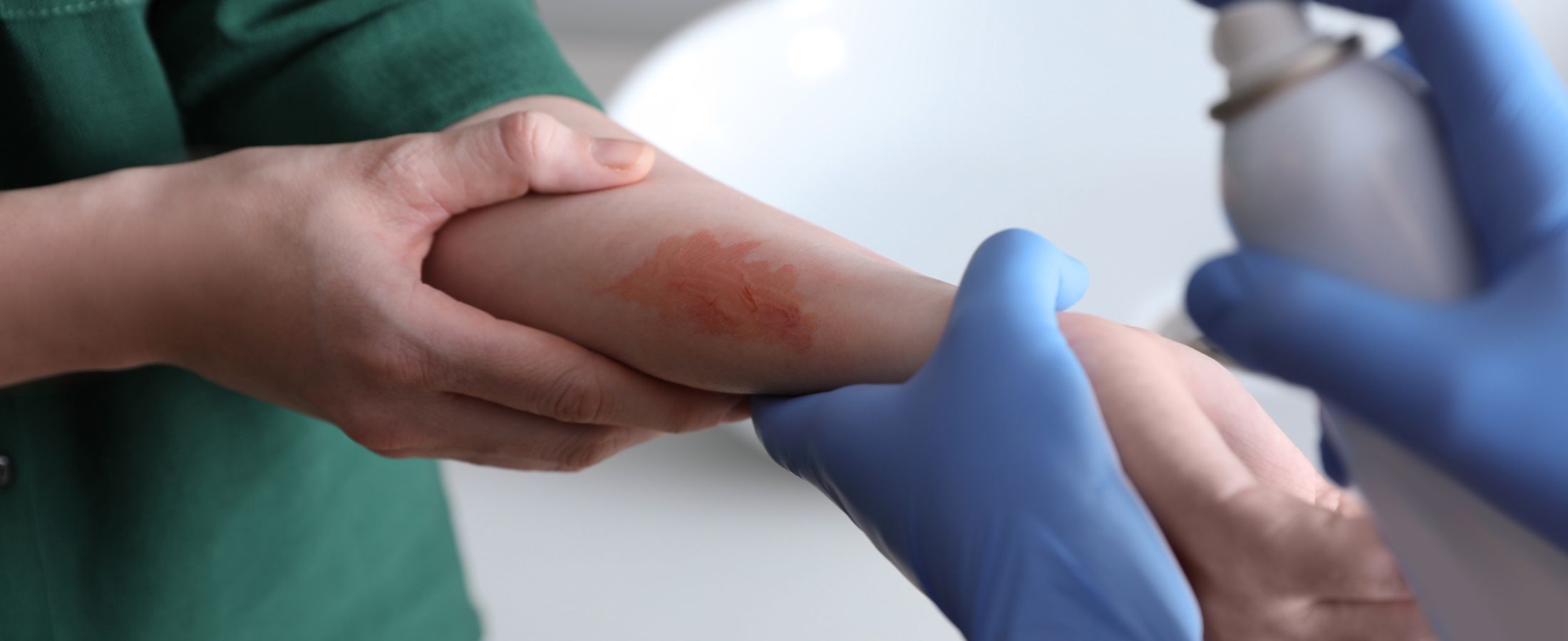
Come trattare una scottatura
Bentornati sul blog di PVS! Ricominciano i nostri articoli settimanali dopo la pausa natalizia.
Nel blogpost di questa settimana parliamo di scottature e ustioni lievi, di quelle che possono verificarsi a casa e sul posto di lavoro. Un incidente comune e che può verificarsi accidentalmente a causa di varie circostanze e che, nella maggior parte dei casi, non ha conseguenze gravi.
La maggior parte delle ustioni lievi viene curata localmente con garze, cerotti e bendaggi appropriati – di questo e dei passaggi da effettuare parleremo più avanti. Ma sapevi che ogni anno circa 486.000 persone si rivolgono al pronto soccorso a causa di un’ustione? Per fortuna, la maggior parte delle volte le cure ospedaliere non sono necessarie – ma è importante riconoscere quando la situazione è seria abbastanza da rivolgersi al pronto soccorso.
Scopriamo come comportaci davanti a un’ustione grazie al supporto di un articolo letto su band-aid.com.
Cos’è un’ustione?
Per ustione si intende un danno alla pelle e ai tessuti derivante da vari fattori: eccessiva esposizione al calore o al sole, al freddo estremo, alle radiazioni, a fonti chimiche/elettriche.
Le cause più comuni delle ustioni sono tendenzialmente le seguenti:
• ustioni termiche: quelle che sopraggiungono dopo il contatto accidentale col fuoco o con fonti di calore (ad esempio pentole molto calde, fornelli della cucina, ecc);
• ustioni elettriche: quelle prese a contatto con la corrente domestica, attraverso cavi o apparecchi elettronici malfunzionanti;
• Scottature solari: dovute alla sovraesposizione al sole senza adeguata protezione;
• ustioni da attrito o sfregamento;
• ustioni da ghiaccio: forse poco conosciute ma spesso contratte, si possono verificare quando si è a contatto diretto con ghiaccio o temperature molto fredde per un periodo prolungato.
• Ustioni chimiche, causate dall’ esposizione a sostanze come la benzina senza un’adeguata protezione.
A seguito di un’ustione, le sensazioni che si provano solo di dolore acuto. Si possono osservare anche:
• formazione di vesciche;
• rigonfiamenti della pelle;
• desquamazioni.
Il dolore può durare qualche giorno e i momenti più fastidiosi si verificano nell’immediato (ovvero subito dopo la scottatura).
A seconda della loro gravità, le ustioni si classificano in primo (ustioni minori), secondo (profonde) e terzo grado (molto gravi, che distruggono derma ed epidermide e devono assolutamente essere curate in ospedale).
Come curare un’ustione di lieve entità
Ti sei provocato un’ustione di lieve entità e hai bisogno di proteggere la ferita in maniera corretta? Ecco come agire, step by step.
1. Raffredda la porzione di pelle ustionata sotto l’acqua corrente fresca (non ghiacciata!) per almeno 5 minuti e non oltre i 30 minuti (la tempistica varierà a seconda delle dimensione dell’ustione). L’acqua fredda ridurrà immediatamente e sensibilmente il gonfiore.
2. Tampona la parte ustionata con un panno asciutto, pulito e morbido. Applica, se la possiedi, una pomata antibiotica/anti infezioni.
3. Applica una benda sterile o una garza che copra l’ustione, assicurandoti che rimanga al suo posto e non si muova. Cambia la benda almeno una volta al giorno (o secondo necessità), pulendo sempre accuratamente la ferita.
Cosa ne pensi di questo articolo? E tu come agisci quando ti procuri accidentalmente una piccola ustione?
Scopri tutti i nostri prodotti sul sito pvs.spa.it.




